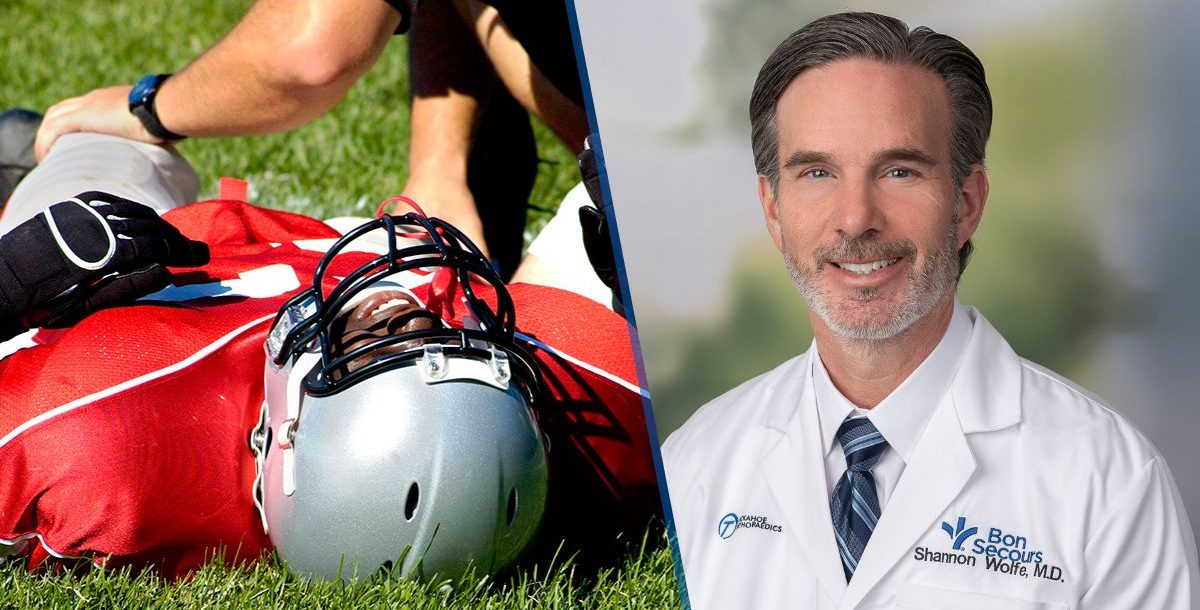Football season is one of the most anticipated times of the year and kids can’t wait to get back on the field. Football is a great way to get exercise and join a team. However, like with any sport, there’s an increased risk of injury when playing the game, and there are some steps you can take to avoid the most common football injuries athletes experience.
“Most football seasons don’t last more than 10 weeks. Missing one week of practice and play can really set back the athlete,” Shannon Wolfe, MD, a sports medicine and orthopedic physician with Bon Secours – Tuckahoe Orthopedics, shares. “Therefore, timely diagnoses and treatment will provide quicker recovery and less time lost for the athlete.”
Plus, some football injuries are avoidable when you use protective and preventive measures. So, learning which injuries to look out for and how to treat them can lessen their impact or help you to avoid them altogether.
What are the most common football injuries?
The risk of injury is present in any sport, but especially in the game of football. This is mostly because of the impacts and head-to-head contact players endure.
These are some of the most common football injuries:
- Concussions can result from traumatic impacts. A football player may suspect a concussion if they experience nausea or dizziness, headaches, loss of concentration and blurry vision, or loss of balance. Concussions can be serious and should be treated by a medical professional as soon as possible.
- Heat-related injuries, such as heat exhaustion or heat strokes, often occur during summer training camps or when the temperatures are high outside into the late days of September.
- Lower-back injuries can begin to form once training season begins. This pain usually occurs due to overworking the body and its muscles.
- Knee injuries can happen during games or practice, such as ankle sprains or tearing the ACL/PCL and knee cartilage. These are common due to the movement of the body in football.
- Shoulder injuries can result from impact from offensive and defensive linemen.
How to prevent football injuries
The best way to prevent sport-related injuries is to make sure you are giving your body the care and attention it needs. Make sure your student-athlete is listening to their body when it tells them it’s dehydrated and needs water, as dehydration can cause cramping, leading to further injuries.
Stretching is also vital to help your body get used to increased movement and activity. Warming the body up and cooling it down helps put less pressure on your muscles.
Perhaps the most important way to avoid head injuries like concussions is to make sure to wear protective gear when playing football. This includes helmets, mouth guards, proper shoes, knee pads and shoulder pads.
What to do when you need to treat football injuries
If a sport-related injury occurs, it’s important to get it treated right away to avoid long-term damage. More often than not, an injury sustained from football must be treated by a medical professional.
“Additionally, all high schools have athletic trainers,” Dr. Wolfe says. “Athletic trainers are uniquely positioned to diagnose and facilitate injuries efficiently and, more importantly, before they become chronic. It is important for student-athletes to recognize these trainers and report to the trainers any injuries that may have occurred during practice or play, even if the athlete feels it’s a minor injury.”
Depending on the injury, a sports medicine specialist may recommend the following:
- Anti-inflammatory medication
- Bed rest or time off from the sport
- Ice to reduce swelling
- Physical therapy
- Surgery
Learn about the sports medicine services we offer at Bon Secours.





